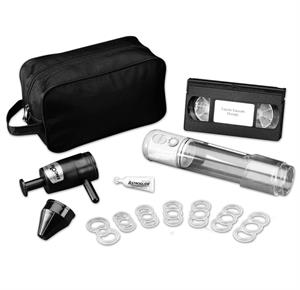Get 10% Off*, Use Code: HPDS25
Get 10% Off*, Use Code: HPDS25

Introduction | Symptoms | Causes | Complications | Prevention
Prostate cancer is one of the most common types of cancer found among men around the world. According to the American Cancer Society more than 100,000 men are diagnosed with prostate cancer every year. After skin cancer, prostate cancer is the leading cause of cancer related deaths in the United States. Though prostate cancer might sound scary, it can be treated and managed if diagnosed and attended in time.
The prostate gland is a walnut-sized gland situated beneath the urinary bladder and is responsible for the secretion of seminary fluids that protect and nourish the sperm. Seminary fluid is released into the vas deferens with the sperm from the testes and is released from the body in the form of ejaculation. There are multiple conditions that can affect the prostate gland and hamper its normal functioning, which include prostatitis, enlarged prostate, etc. But the most common condition associated with the prostate gland is cancer.

Prostate cancer is the abnormal growth of cells within the prostate gland that begins growing slowly. Usually prostate cancer stays confined within the gland itself but can turn aggressive and spread to other parts of the body. Like every other form of cancer, prostate cancer can also metastasize to the rest of the body especially to the nearby organs such as bones, muscles, testes and kidneys. Once the cancer metastasizes in the aggressive form to other parts of the body, it can be managed and controlled but it cannot be cured.
Prostate cancer usually doesn’t show any major symptoms during its early stages but over time, several symptoms develop. They include:
Like other forms of cancer, prostate cancer also doesn’t have any direct cause that might cause abnormality in the cells of the prostate gland. The mutations in abnormal cells can be caused by a wide range of things such as genes, radiation, or can be a side effect of drugs or some other condition.
Cancer is not always associated to causes but to a wide range of risk factors as well. Risk factors of prostate cancer include:
Prostate cancer can lead to a number of complications which includes complications after treatment as well. They include:

There is no way we can ensure the complete prevention of prostate cancer. But there are a number of changes we can incorporate in our daily lives to reduce the chances of prostate cancer.
Although prostate cancer can be treated easily, a misjudgment in analyzing the condition can lead to several complications. It is always better to be proactive towards it and manage the condition at the right time. At HPFY, we ensure that you have the right information and products to manage and diagnose prostate cancer at the right time.
Disclaimer: All content found on our website, including images, videos, infographics and text were created solely for informational purposes. Our content should never be used for the purpose of diagnosis or treatment of any medical conditions. Content shared on our websites is not meant to be used as a substitute for advice from a certified medical professional. Reliance on the information provided on our website as a basis for patient treatment is solely at your own risk. We urge all our customers to always consult a physician or a certified medical professional before trying or using a new medical product.

Taikhum Sadiq has been a Health Products For You contributor since 2016.
He is an archaeology student and is passionate about learning about the past and how it impacts our future. He believes ...
How To Increase Iron Levels Quickly
It’s a question that must have puzzled you like many others. Iron is essential in hemoglobin production and its inadequate levels can negatively impact your health. Dive into this informative article to explore top iron-rich foods that can help you fight iron deficiency.
10 Best Coccyx Cushions for Tailbone Pain
If you're like most people, you spend about 8 to 10 hours sitting every day. However unhealthy, it is part of life for many, and can cause tailbone pain. Coccyx cushions can help alleviate this pain. Click to read more and find the perfect coccyx cushion for your tailbone pain.
5+ Best Adult Diapers for Fecal Incontinence
Dealing with fecal incontinence can be challenging, but you're not alone. Read this article and navigate through discreet and effective solutions that help you manage fecal incontinence and let you live life on your terms with confidence and comfort.
Top 5 Best Reviewed Nebulizers of 2024
Need an effective and affordable nebulizer? Look no further, in this article we offer 5 of our best reviewed nebulizers that are loved by our customers. Click to read more and find the perfect nebulizer for all your respiratory needs.
10 Best Penis Pumps For Erectile Dysfunction
For anyone dealing with erectile dysfunction, penis pumps serve as a great way to manage it. But with so many products available, determining the best one for your needs can be challenging. To assist you in refining your choices and making an informed decision, here are our top 10 options, recognized for their effectiveness and safety.